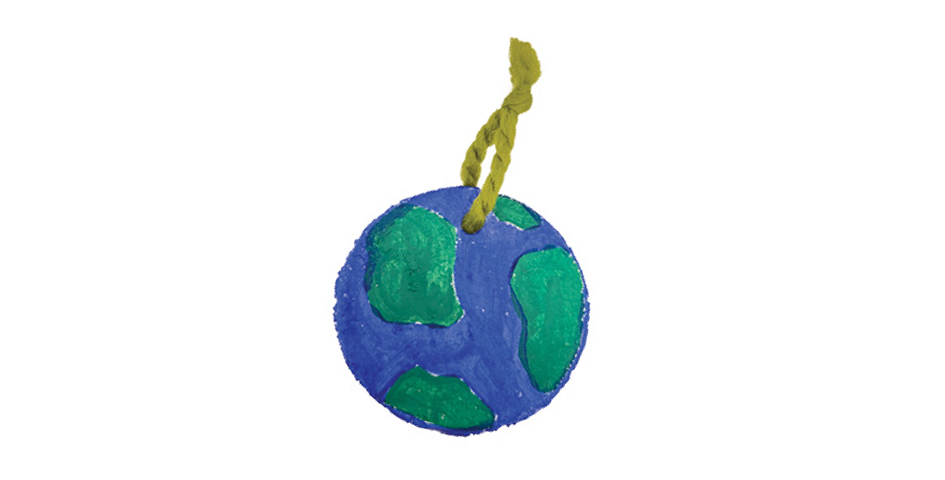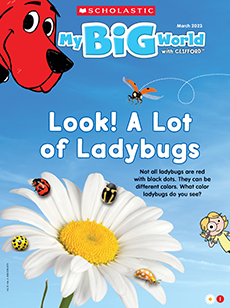Our Big, Beautiful Earth Lesson Plan
What We Are Learning
Social Studies Focus:
Earth, conservation
Theme Vocabulary Words:
litter, mountain, ocean, meadow
Skills We’re Practicing:
group discussion, critical thinking, vocabulary, counting, visual discrimination
- The Earth and I by Frank Asch personifies Earth in an adorable way. After reading, encourage children to talk about ways in which Earth is a good “friend” to them. Then brainstorm ways to be a good friend in return!
Explore Recyclables
Materials: recyclables (e.g., plastic bottle caps, yogurt cups, plastic spoons, cereal boxes), play dough, glue, tape
- What can you create with recycled materials? The possibilities are endless!
- In advance, ask families to wash and bring in any small containers, plastic utensils, caps, and lids they will no longer use.
- Place the recyclables on trays where children can explore them by feeling, sorting, stacking, and counting them. How is one piece different from the next? What are some similarities?
- After they’ve had a chance to explore the materials, tell children that one way to be kind to our big, beautiful Earth is to make less trash. We can do this by reusing materials—and they can use these recyclables to make art! Encourage them to create abstract, mixed-media sculptures using the recycled materials. They can use tape, glue, or play dough to keep their sculptures together! When they’re done, have children give their sculptures a name, and display them around the classroom. art/exploration

Materials: all-purpose bleached flour, salt, warm water, a bowl, a glass, green and blue paint, yarn
- Let children show how much they care about our big, beautiful planet with this fun, Earth-conscious craft!
- Help children make salt dough by combining 2 cups of flour, 1 cup of salt, and 1 cup of warm water in a bowl. Let the mixture rest for a few moments to give the salt time to absorb the moisture.
- Sprinkle flour on the work surface. Then have children roll the dough to about 1/4-inch thickness. Cut out large circles using a glass as a guide. Next, have children poke a straw-sized hole at the top of each circle. Place the circles on a drying rack and let dry for 24-48 hours.
- Once the circles are dry, have children decorate them. Display the cover of the issue, and explain that the blue represents Earth’s water, and the green is land. The children can use blue and green paint to turn their ornaments into mini Earths! When they’re done, thread a piece of yarn through the hole and tie it. Children can attach their Earth ornament to the zipper on a backpack or wear it as a pendant on a necklace to show the world how much they love our planet! fine-motor skills
